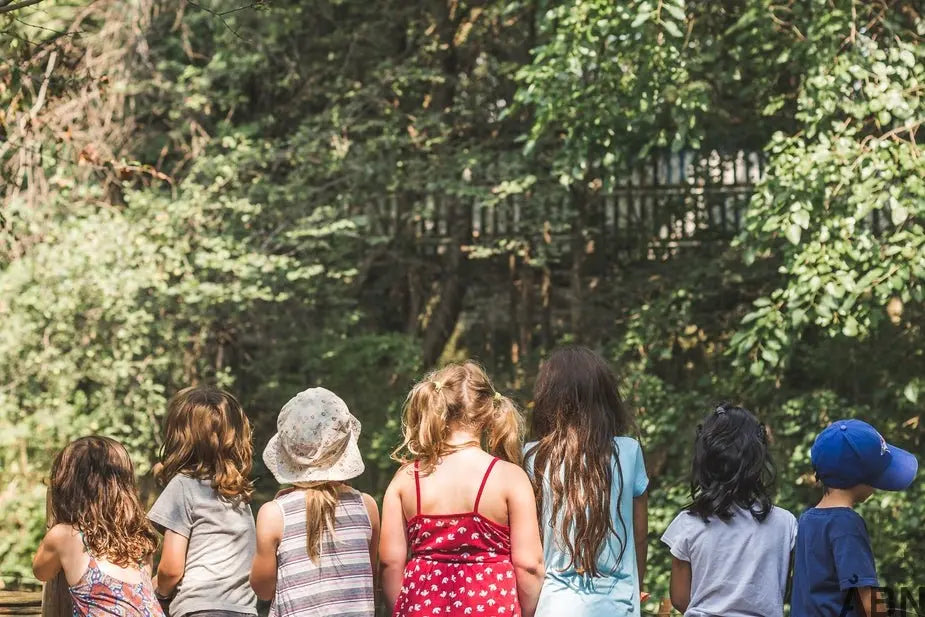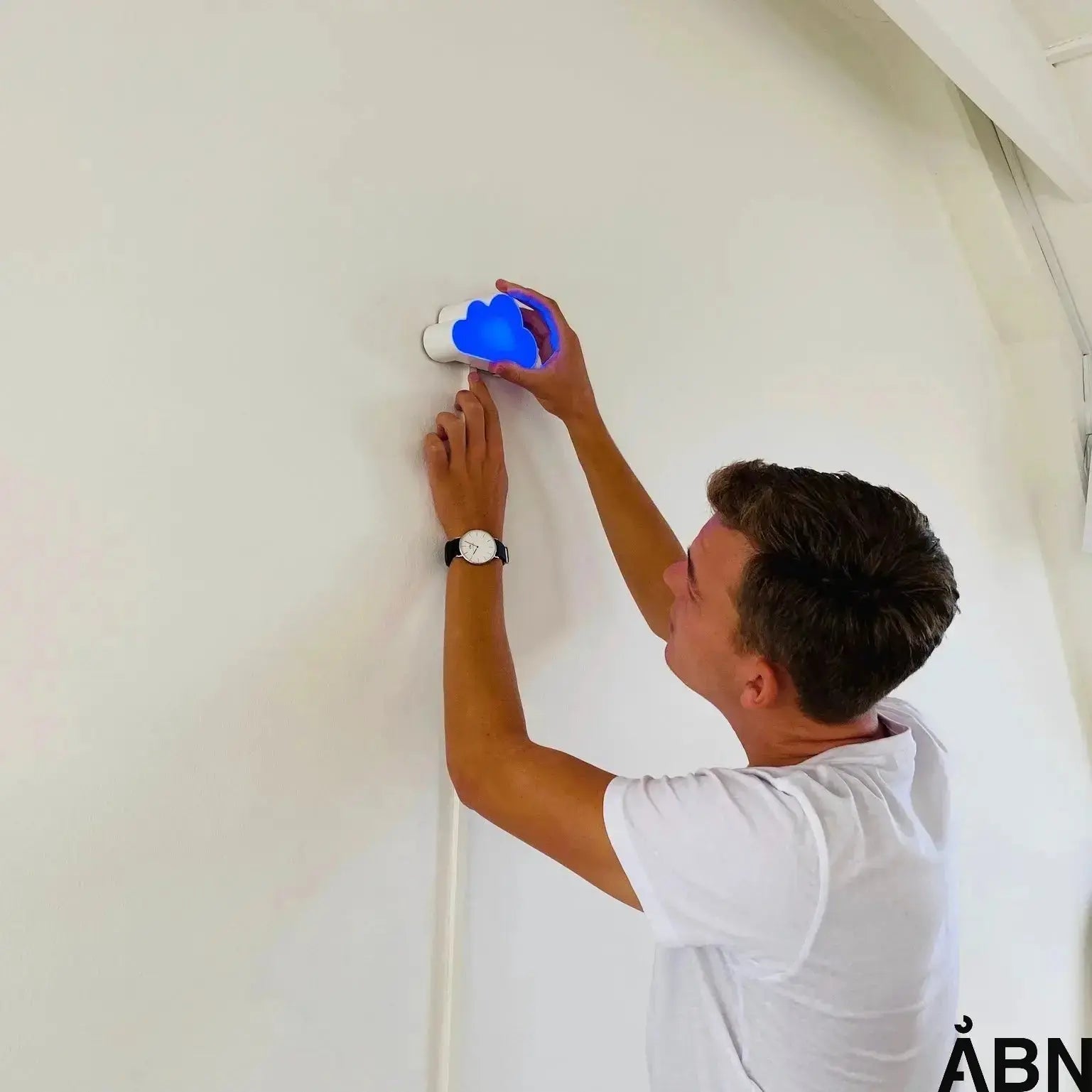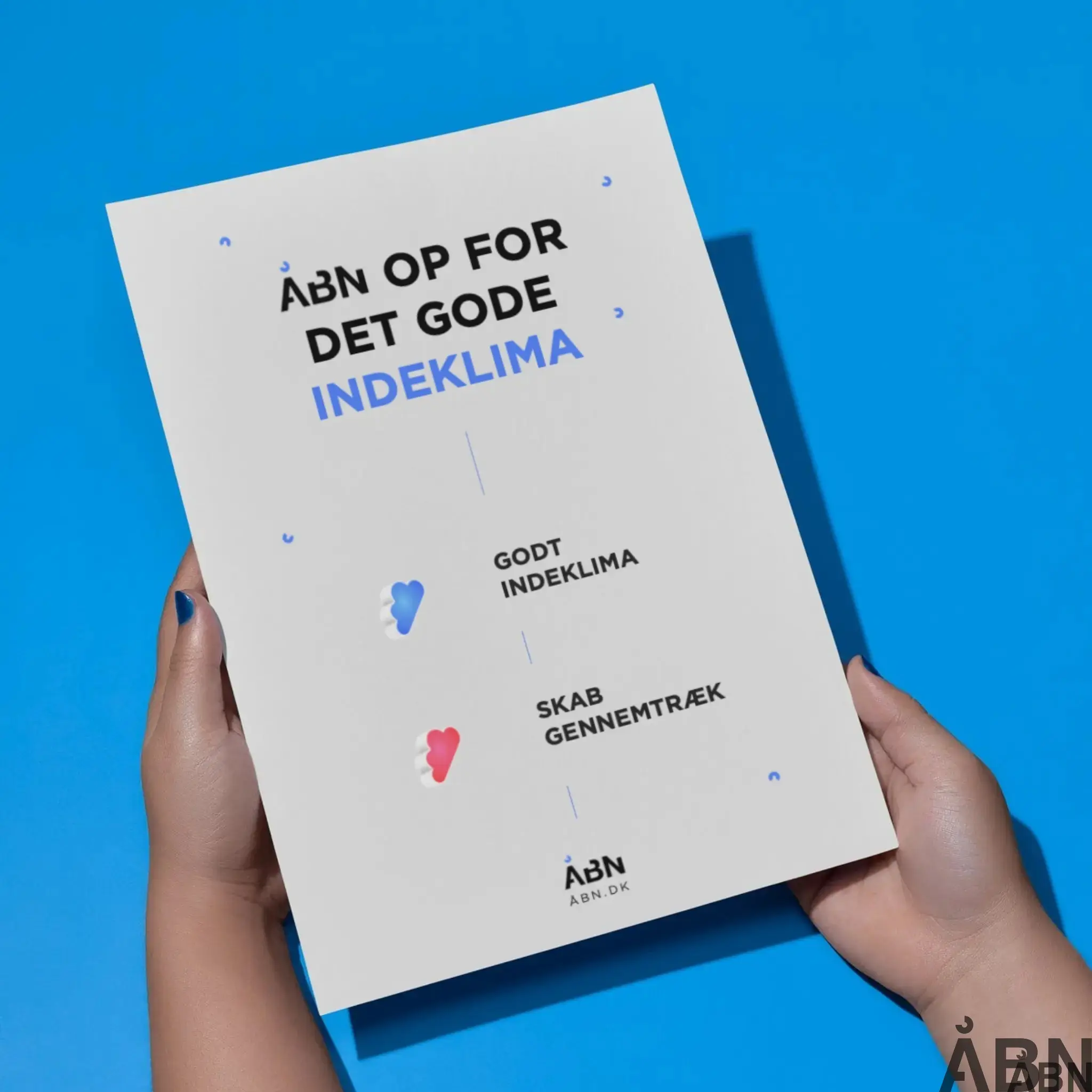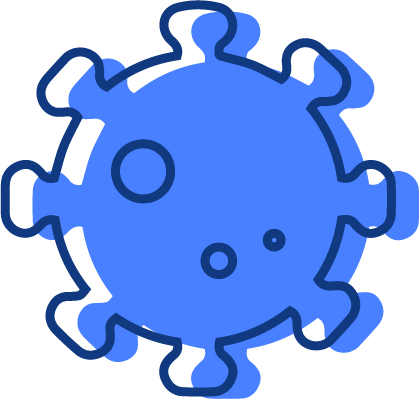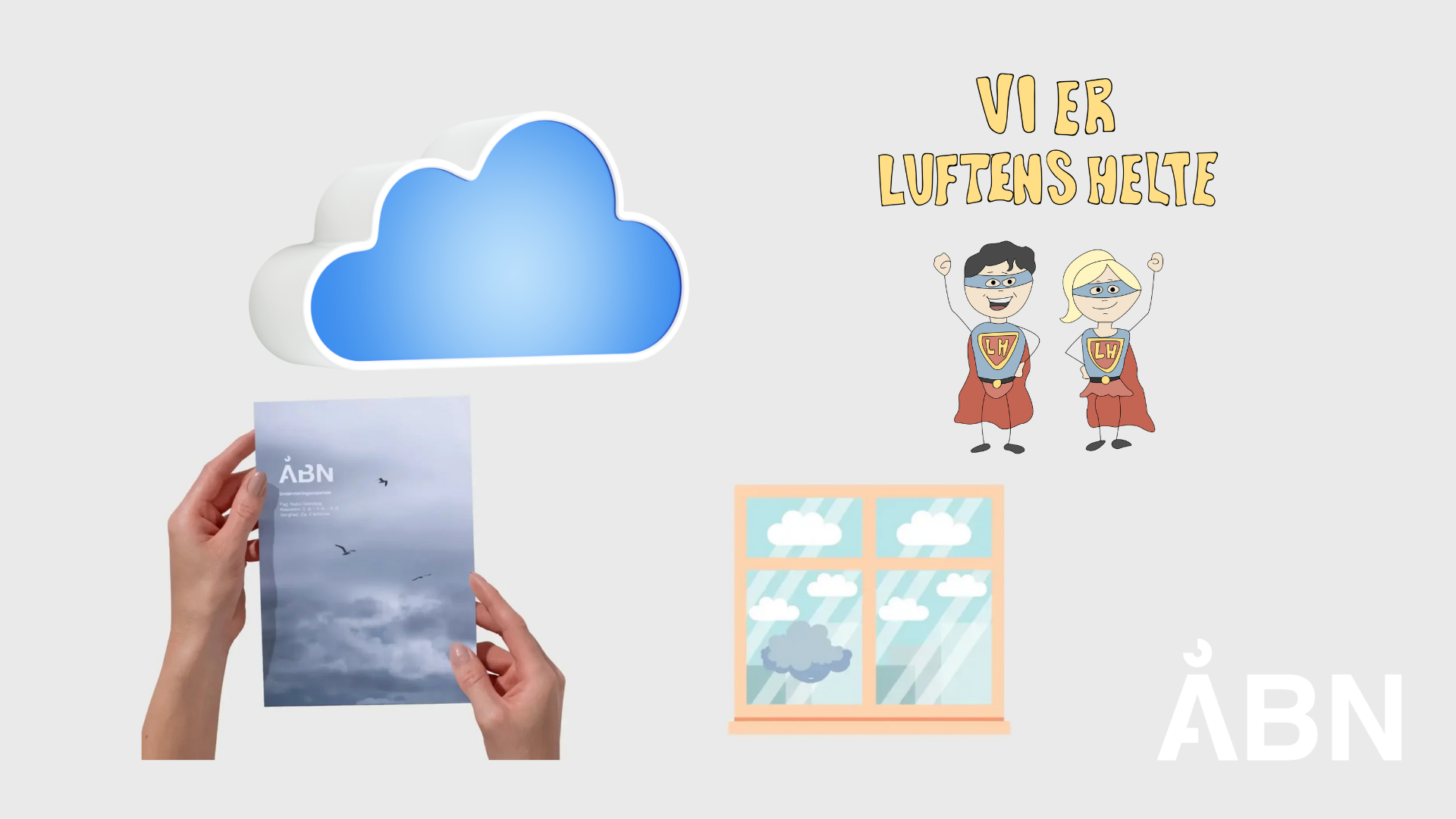Pilot: SKYEN creates lasting improvements
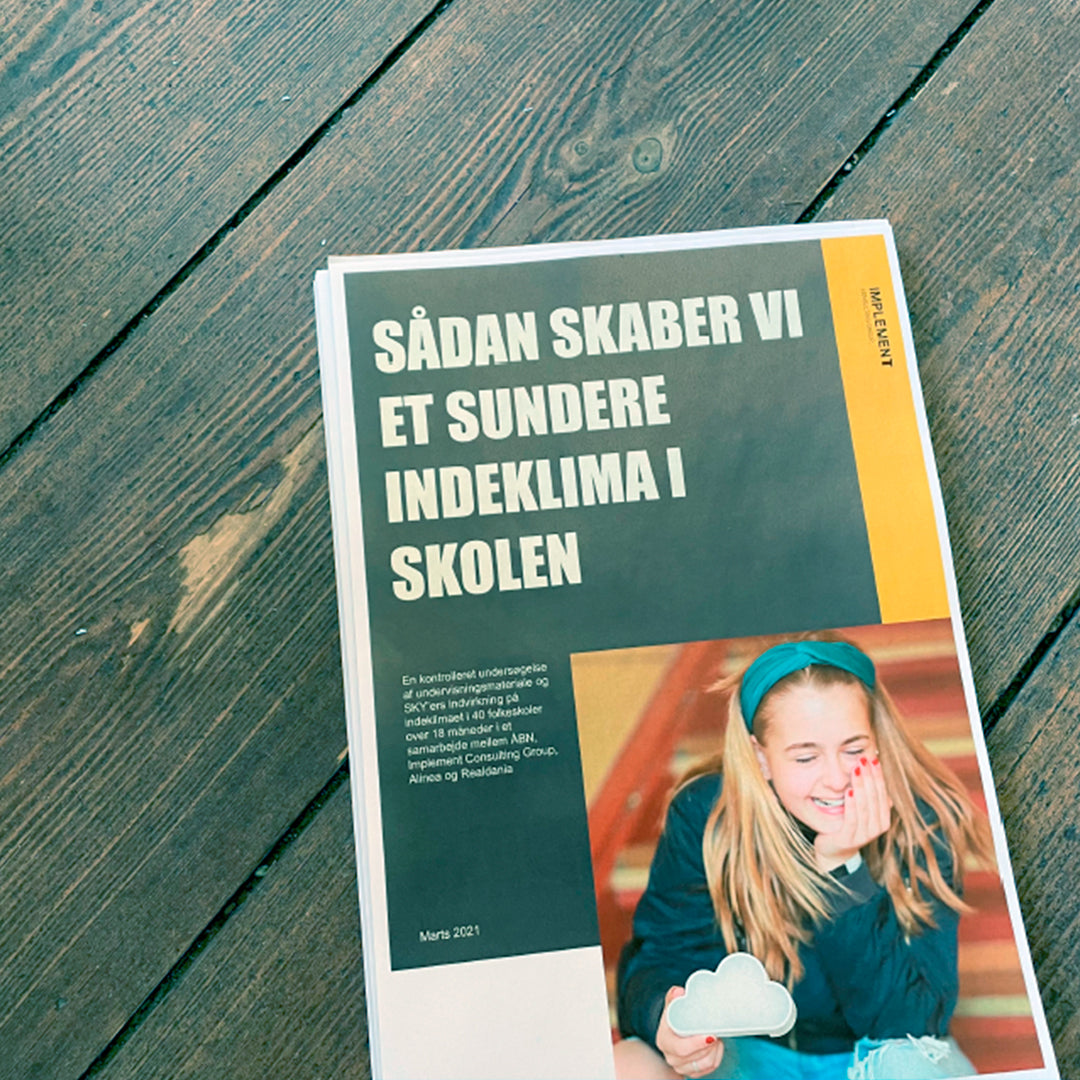
Poor indoor climate harms children. SKYEN is doing something about it.
As part of Realdania's national effort to improve indoor air quality in schools, ÅBN, in collaboration with Implement Consulting Group and Alinea, conducted an 18-month field study in 33 schools across the country. The purpose was to test how simple and student-engaging solutions could improve air quality in classrooms without ventilation.
The study included three tools, which were tested separately and in combination:
- THE SKY – a visual nudge that lights up red when the indoor climate is poor and blue when it is good. Makes the CO₂ level visible and activates students in real time.
- Habit kit – a practical package with a uniform scheme and instructions that help students and teachers take action when air quality declines.
- Teaching course – a short, digital learning course that introduces students to knowledge about air, oxygen, the body and why ventilation is important.
The result is clear: The combination of visibility, learning and daily routines creates a noticeable and lasting improvement in the indoor climate in the classroom. After just a few weeks, schools were able to measure a significant reduction in the time with high CO₂ levels – and the effect persisted throughout the school year.
The problem is there (still)
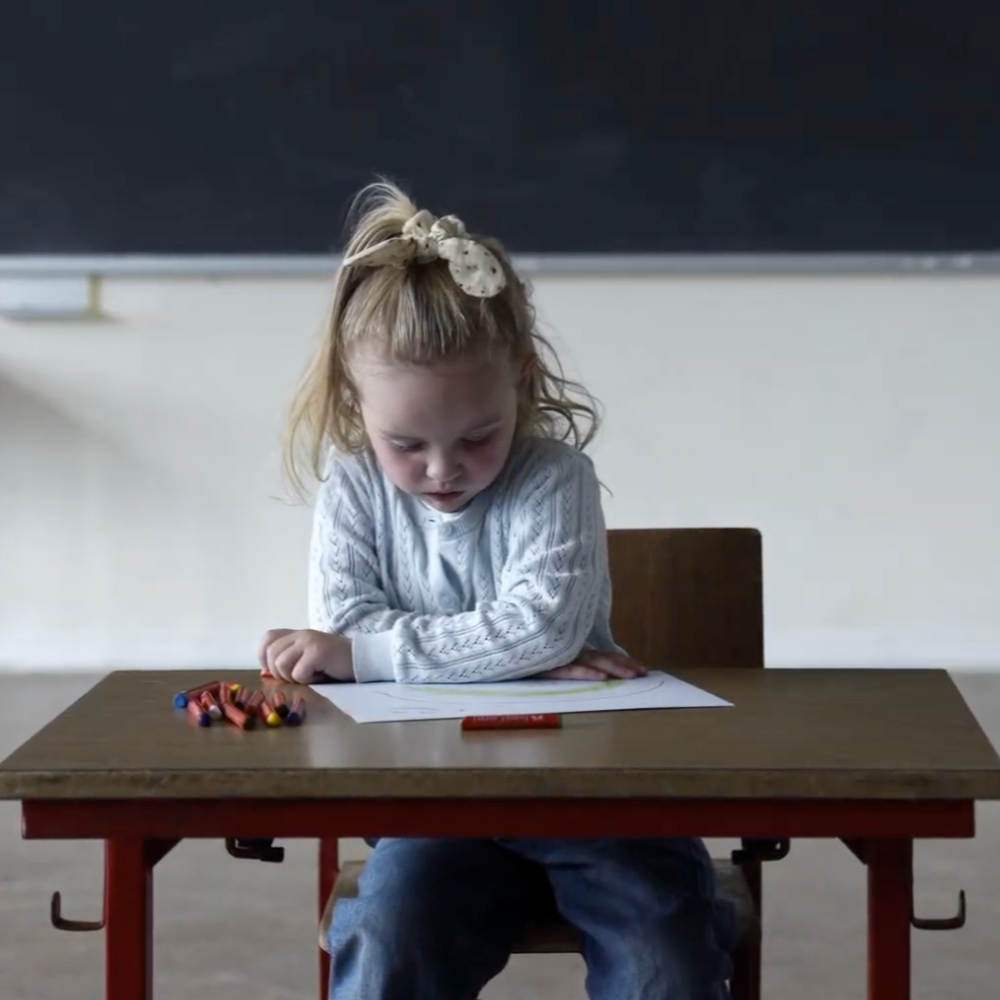

>3 HOURS
During a typical school day from 8am to 2pm, CO2 levels exceed the recommended limit of 1000 ppm.
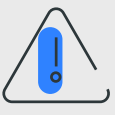
4000 PPM
CO2 levels reach, in the foliage of a typical school day. That's four times higher than the recommended limit value

LEARNING
Falls when the indoor climate becomes poor. Staying in poor air can have serious consequences for well-being and health. Not only during the day, but also in the long term.

DKK 1.3 MILLION
Is the average price for energy renovation of one elementary school, which is the minimum recommendation of many experts to improve the indoor climate.
Denmark's largest test of a behavior-changing solution for schools' indoor climate
What we tested
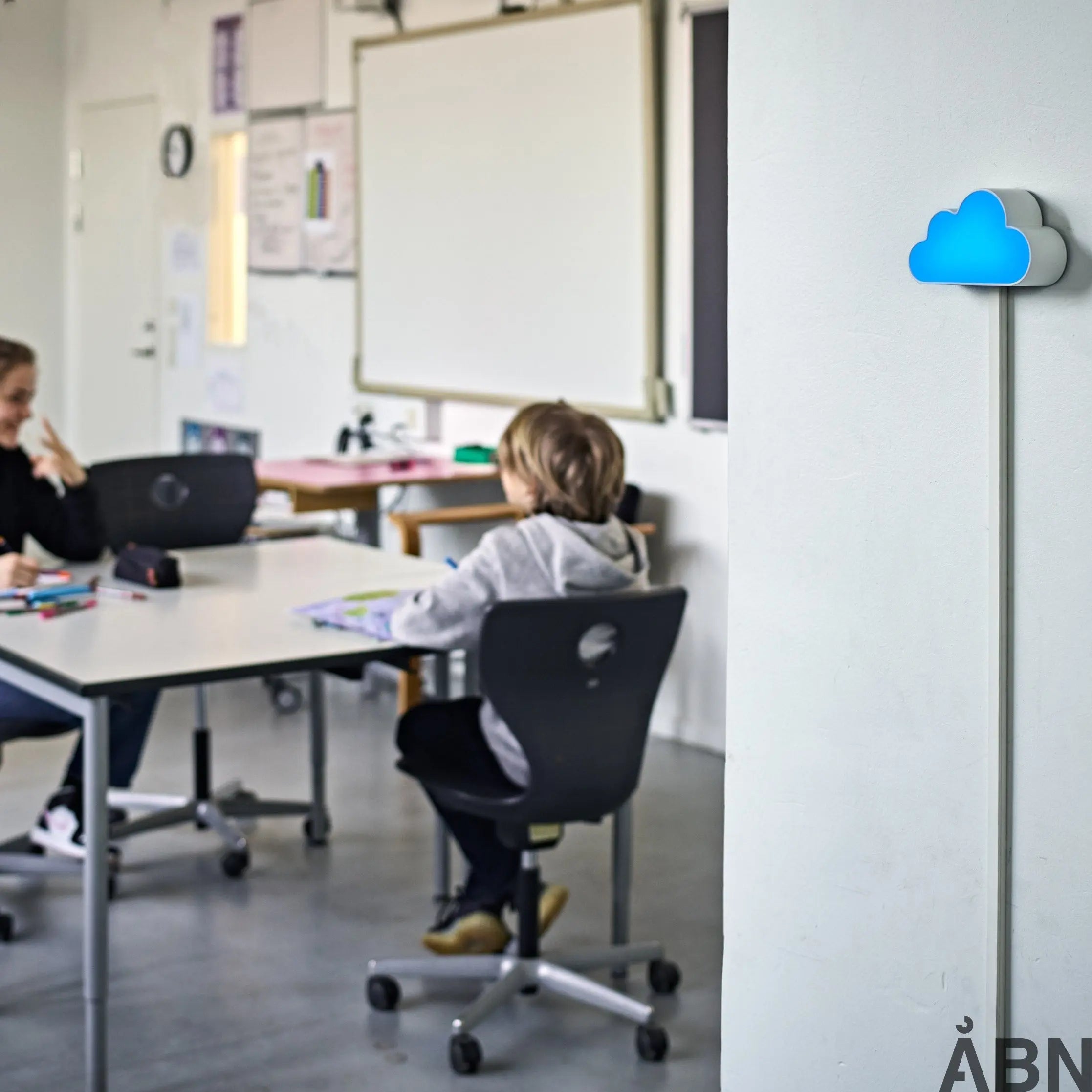
CLOUD
SKYEN is designed and developed to introduce student-engaging behavioral changes for active ventilation in the classroom.
By switching from blue light to red light, the SKY tells students and teachers in the room when to create a draft in order to
maintain a good indoor climate. SKYEN hangs on the wall and only needs to be plugged into a power outlet, making it easy to use. SKYEN changes back to blue when there is sufficient airing out.
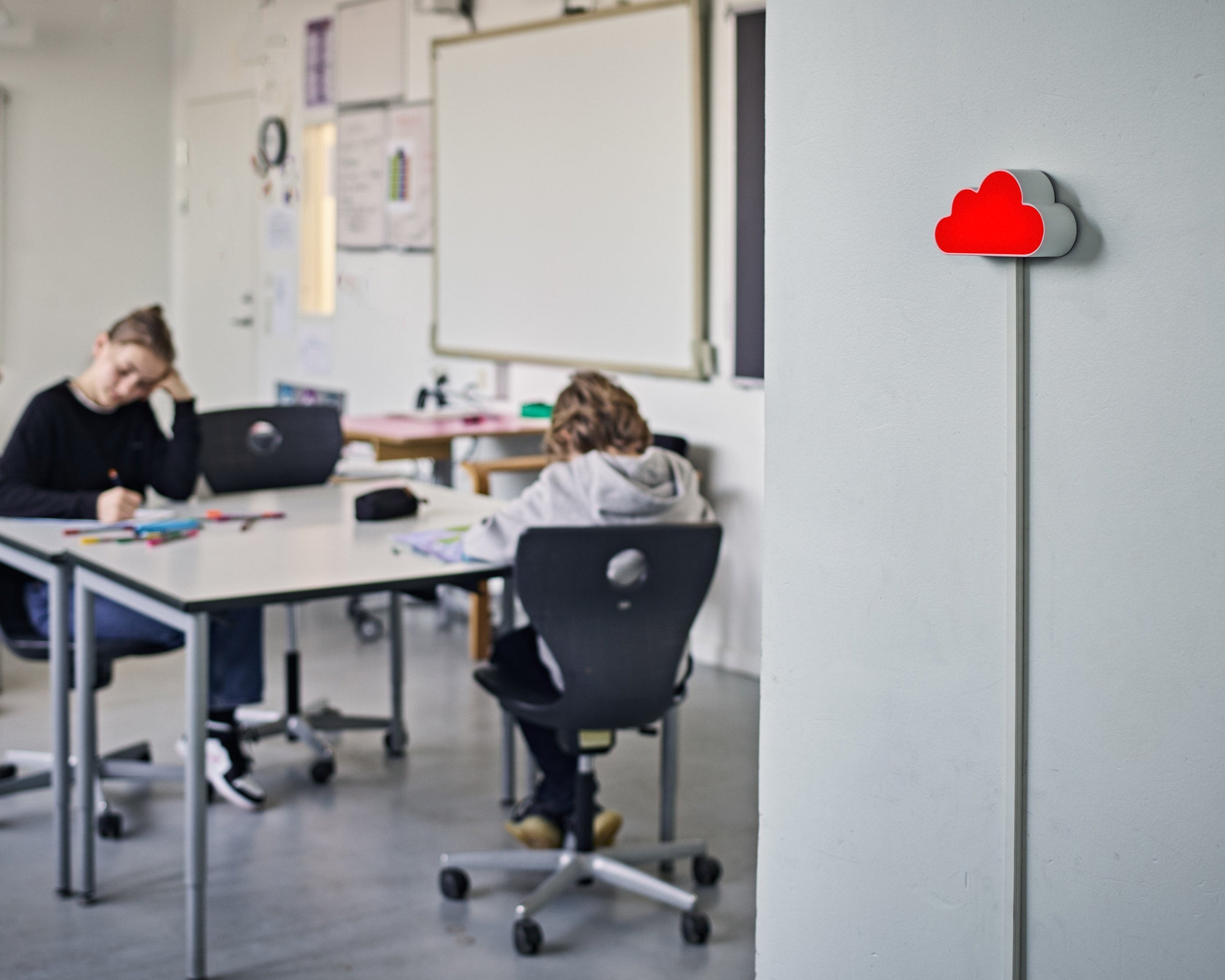
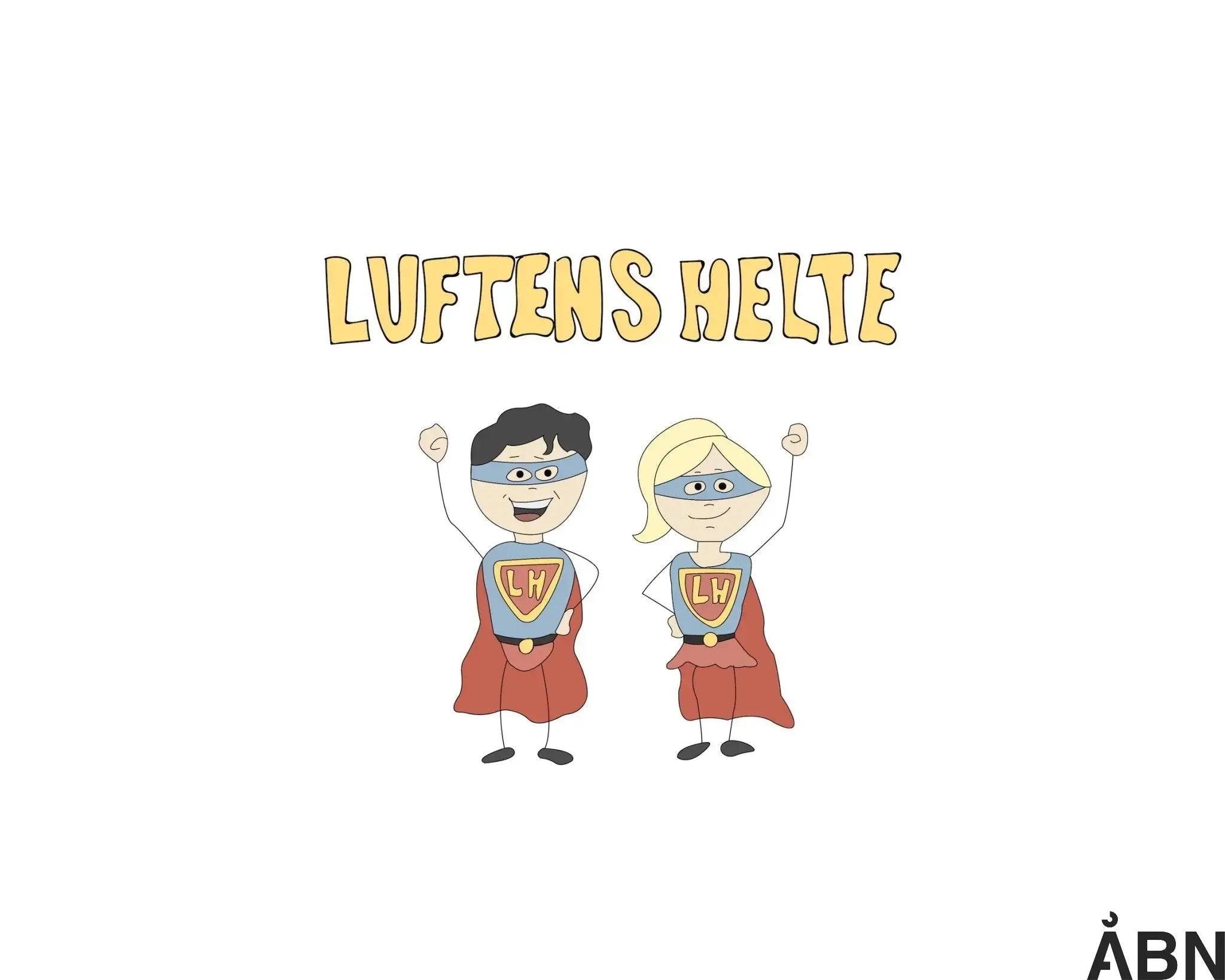
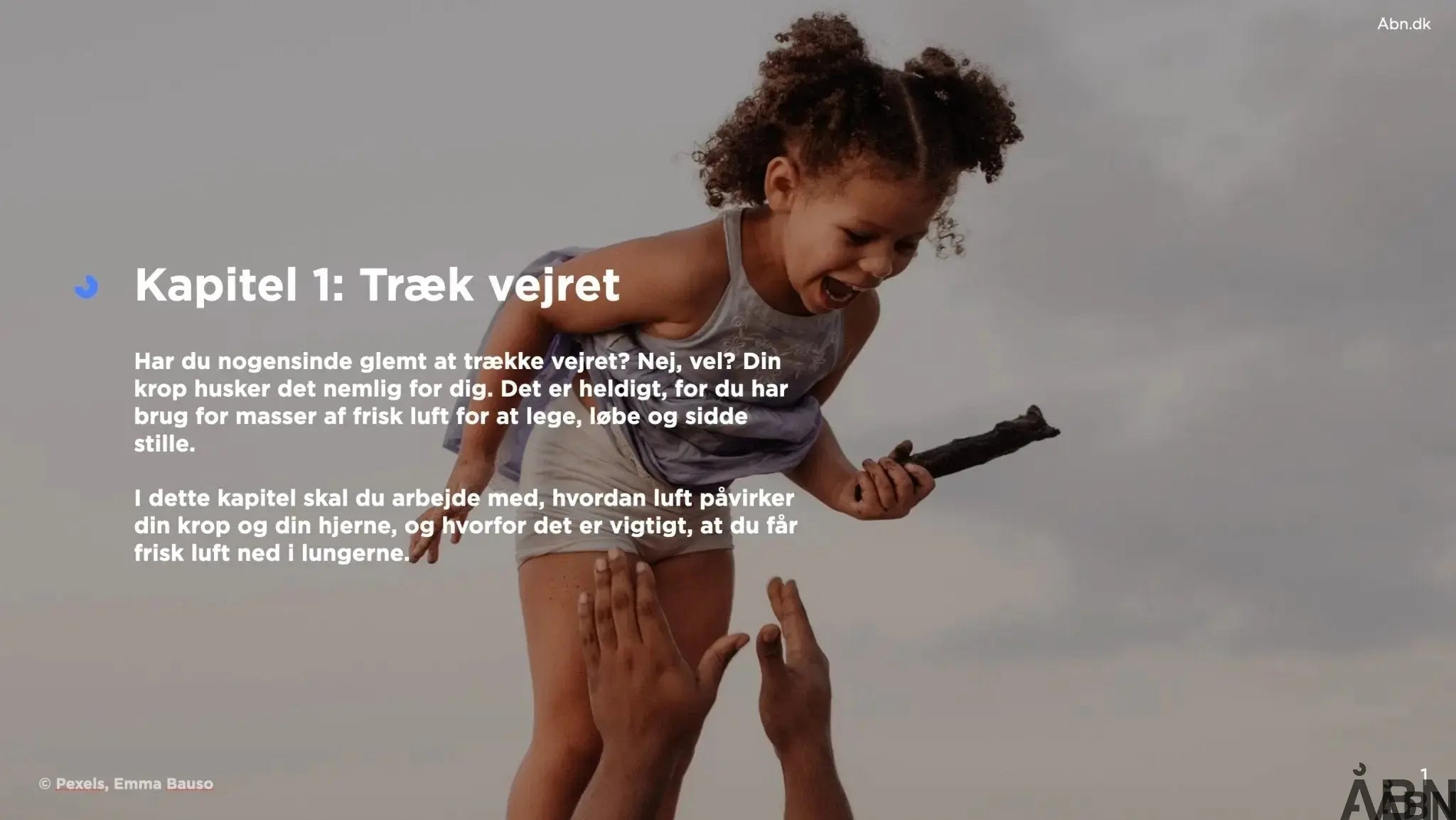
How we tested
The 33 schools were randomly assigned to four test groups. The schools were typical Danish schools from all over the country.
The indoor climate of all schools was measured during a baseline period, after which the solution was implemented.
- One group only received the CLOUD
- One group only received habit kits and educational materials
- One group received all three products
- One group was a control group with no solution implemented
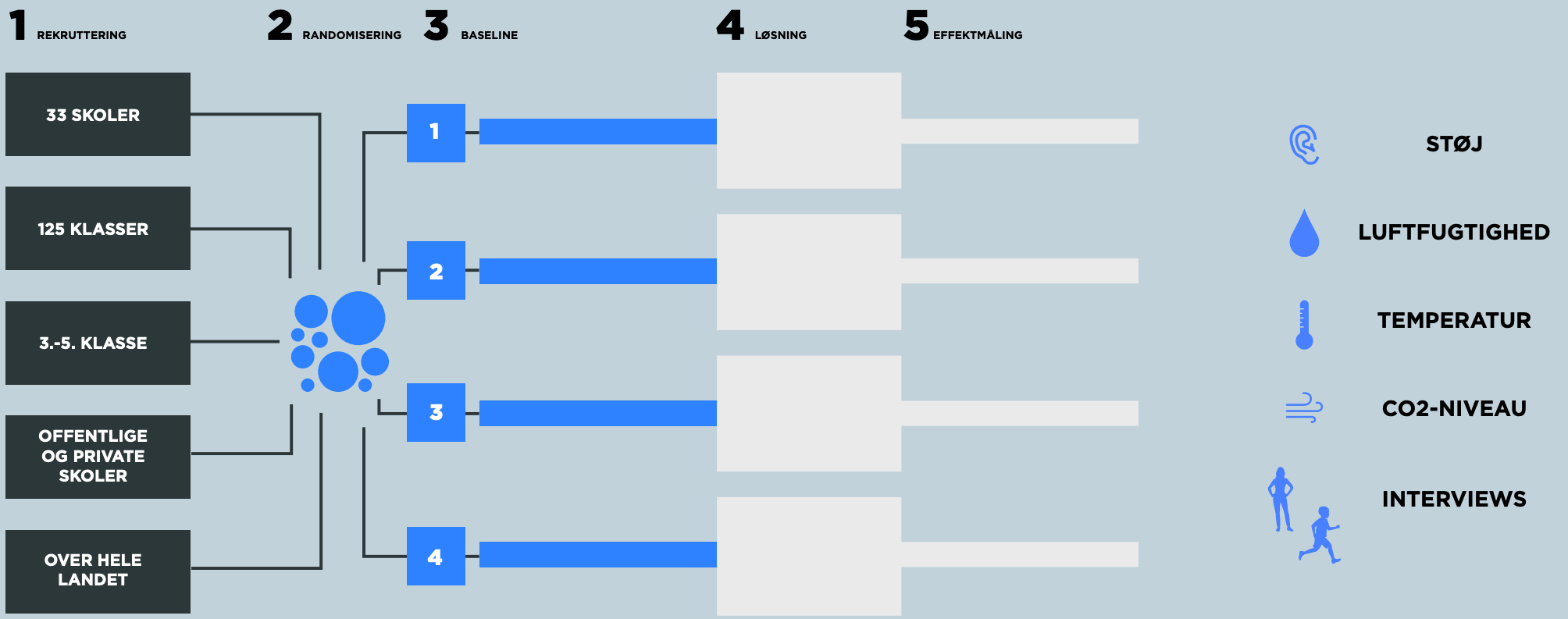
The technical results
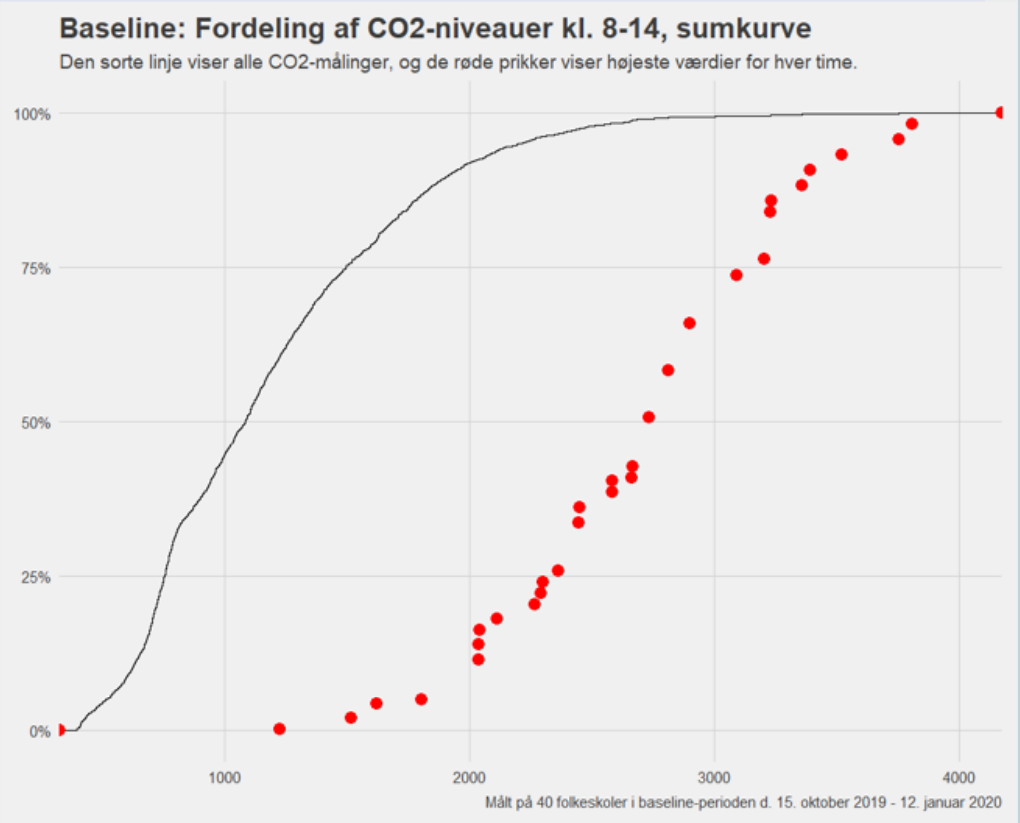
The baseline measurement confirms that the indoor climate in Danish primary schools is too bad , and that it is often decided unhealthy .
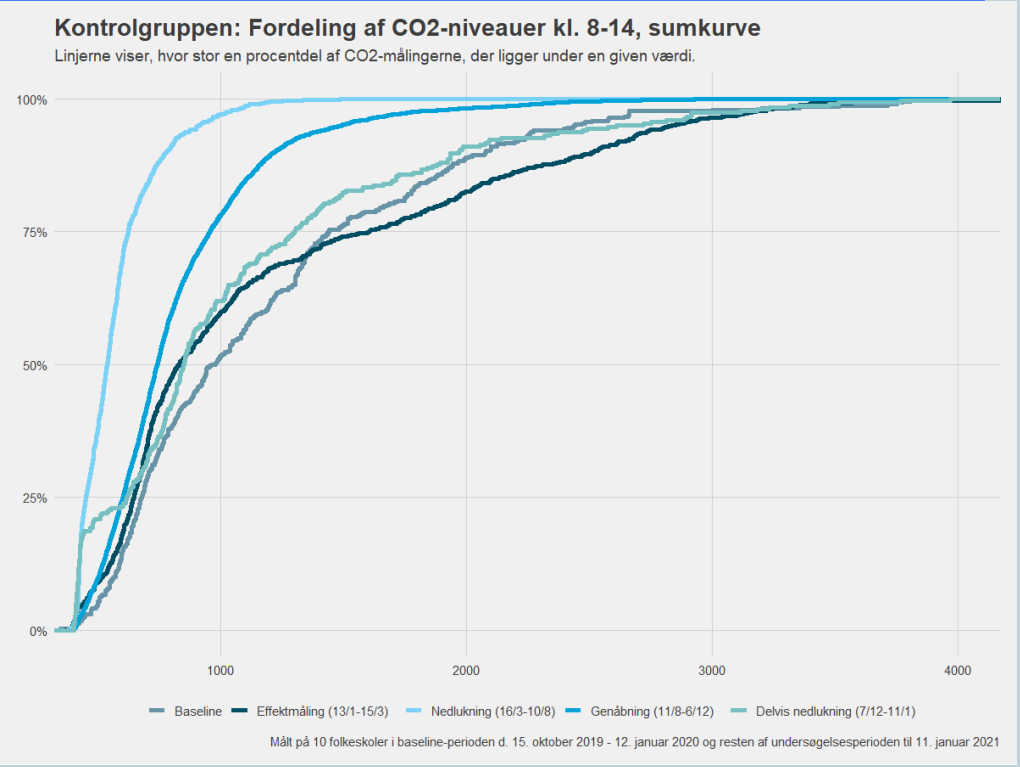
The indoor climate in the control group improves during COVID-19, but ends at the baseline level.
“We would have really liked to have had a SKY because there were also some fairly small classrooms that were part of the experiment.”
– Anne Grethe, deputy headmaster at Vinding School
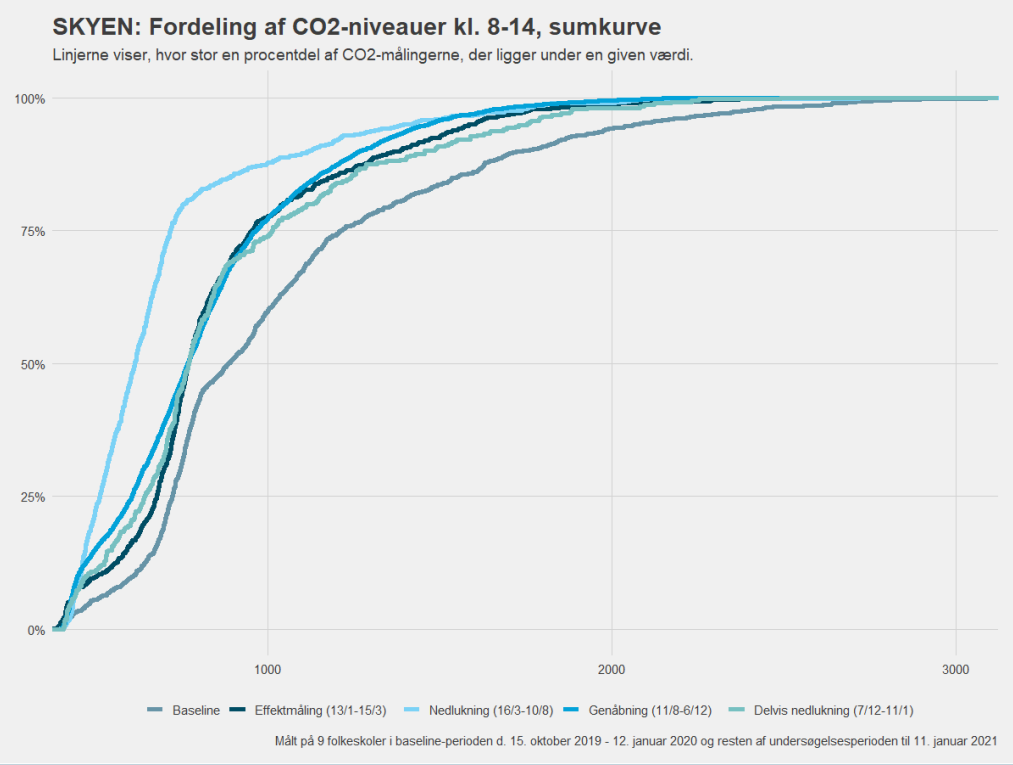
The classes with a SKY experienced significant improvements in the indoor climate to a great level that persisted throughout the study period.
“After we got a SKY in the class, we have become much more aware of the indoor climate. Both me and them. The students raise their hands when it lights up red.”
– Serpil, 4th grade teacher at Krogårdsskolen
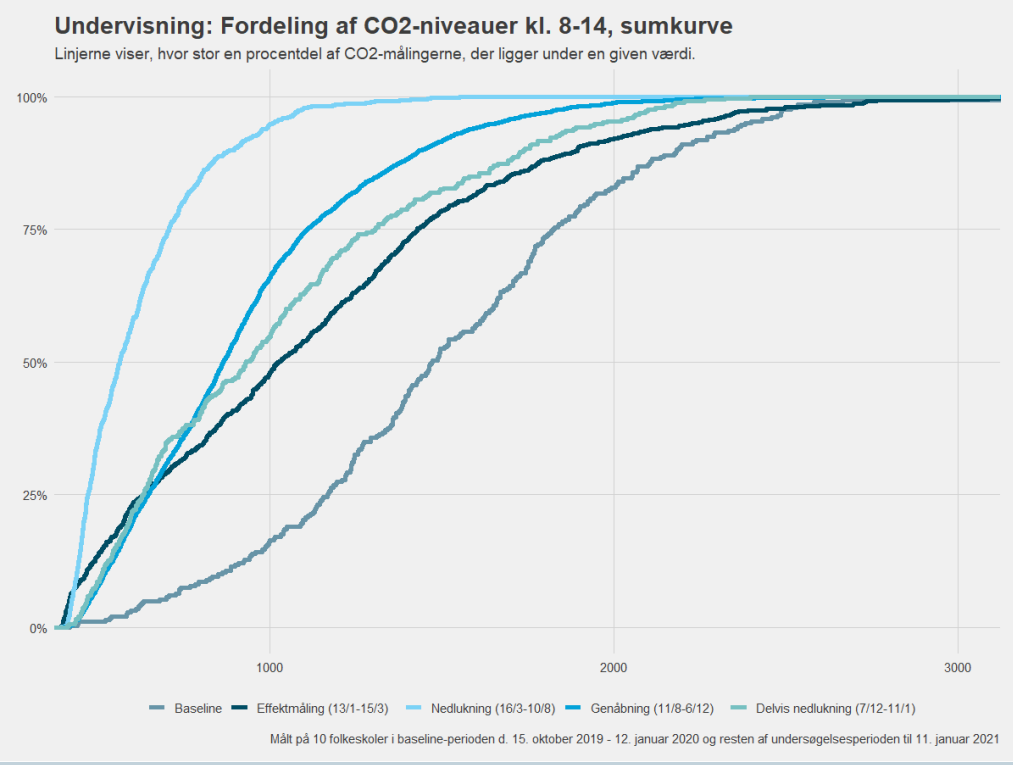
The educational material resulted in a lasting improvement in the indoor climate, but only to a moderate level.
“The teaching opens the children's eyes to the issue, but it must be maintained and have a new angle when it is brought up again.”
– Anna Grethe, deputy headmaster at Vinding School
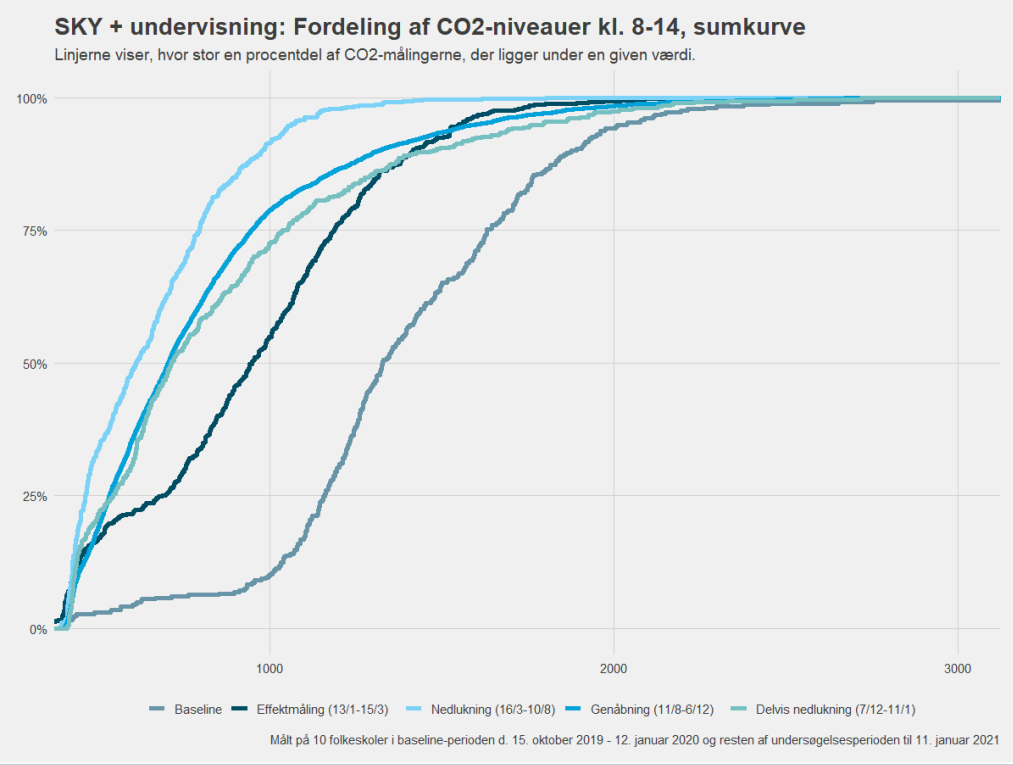
In the classes that received both SKY and teaching material , the indoor climate was permanently improved and ended up at a great level.
“The kids thought it was really fun. I showed them how it changed colors when I breathed into it. Now they don’t think about it so much anymore.”
– Vibeke, 5th grade teacher at St. Norbert's School
Before implementing solution
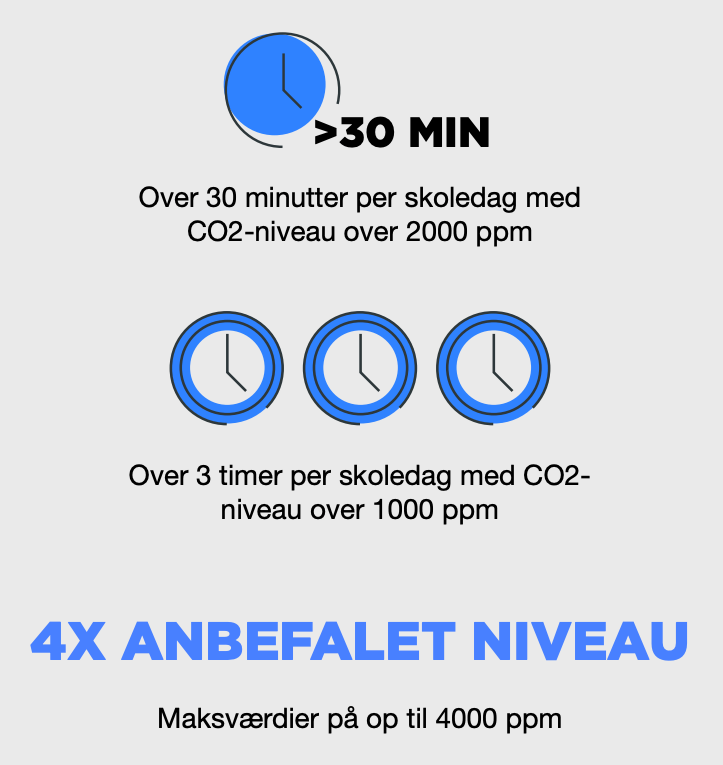
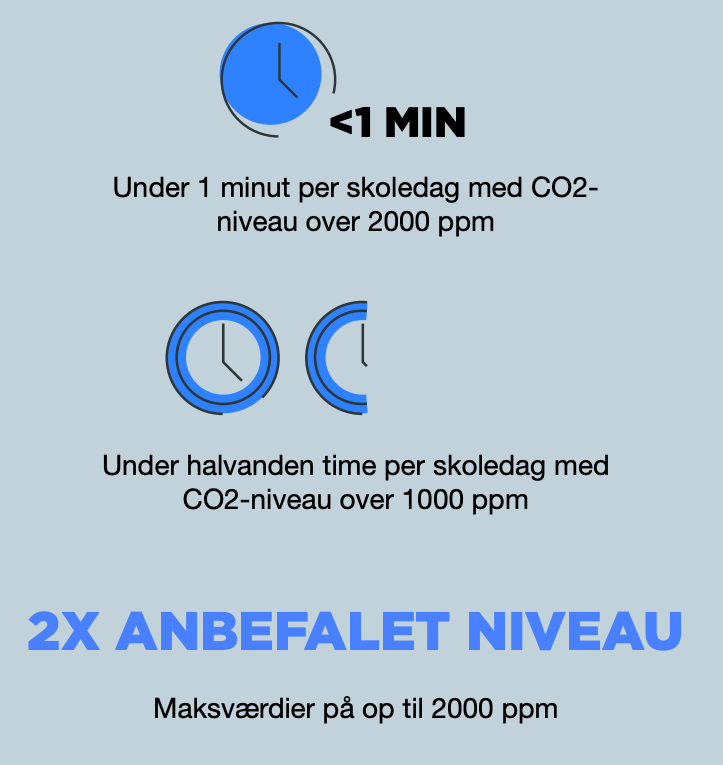
After implementation of SKY and teaching materials
After implementing SKYEN, CO₂ levels dropped significantly and students spent almost exclusively in healthy air throughout the school day. The effect persisted for a full year afterwards – without the need for major investments or technical systems.
Tested in collaboration with Implement Consulting Group
Our study clearly shows that SKYEN, together with a habit kit, supports new sustainable habits in the classroom that give students a healthier indoor climate.
When CO2 levels get too high, it starts to have a negative impact on students' well-being and learning. But with SKYEN, this is effectively eliminated.
A year later, there is no indication that the effect is reversing. That's pretty crazy.
Lasse Frost
Consultant
Implement Consulting Group

“SKYEN is a good example of how behavior can be a powerful tool. It is simple, accessible and has a great impact on everyday life.”
– Anne Gade Iversen, project manager, Realdania
NO RESEARCH HAS PREVIOUSLY SHOWN THAT BEHAVIOR CAN BE CHANGED IN THE LONG TERM
We substantiate this by looking at the before/after measurements of COVID-19.
During COVID-19, the focus is on hygiene, ventilation, etc.
But - when COVID-19 subsides, behavior will return to normal if you don't have tools to help. That is, there will be no lasting behavior change unless you have behavior regulation tools.
to assist!
Changing behavior is therefore difficult…
The study tested three simple solutions – individually and in combination:
- The SKY , which lights up red when the indoor climate is poor and blue when it is good, thus making the CO₂ level visible in everyday life.
- A habit kit that helps the class react when the light changes – for example through camouflage schemes and simple guides.
- A teaching course that explains to students why fresh air is important and how they themselves can make a difference.
The effect was most evident when the SKY and the habit kit were used together – but even the short training course created improvements, especially when it was followed up in everyday life.
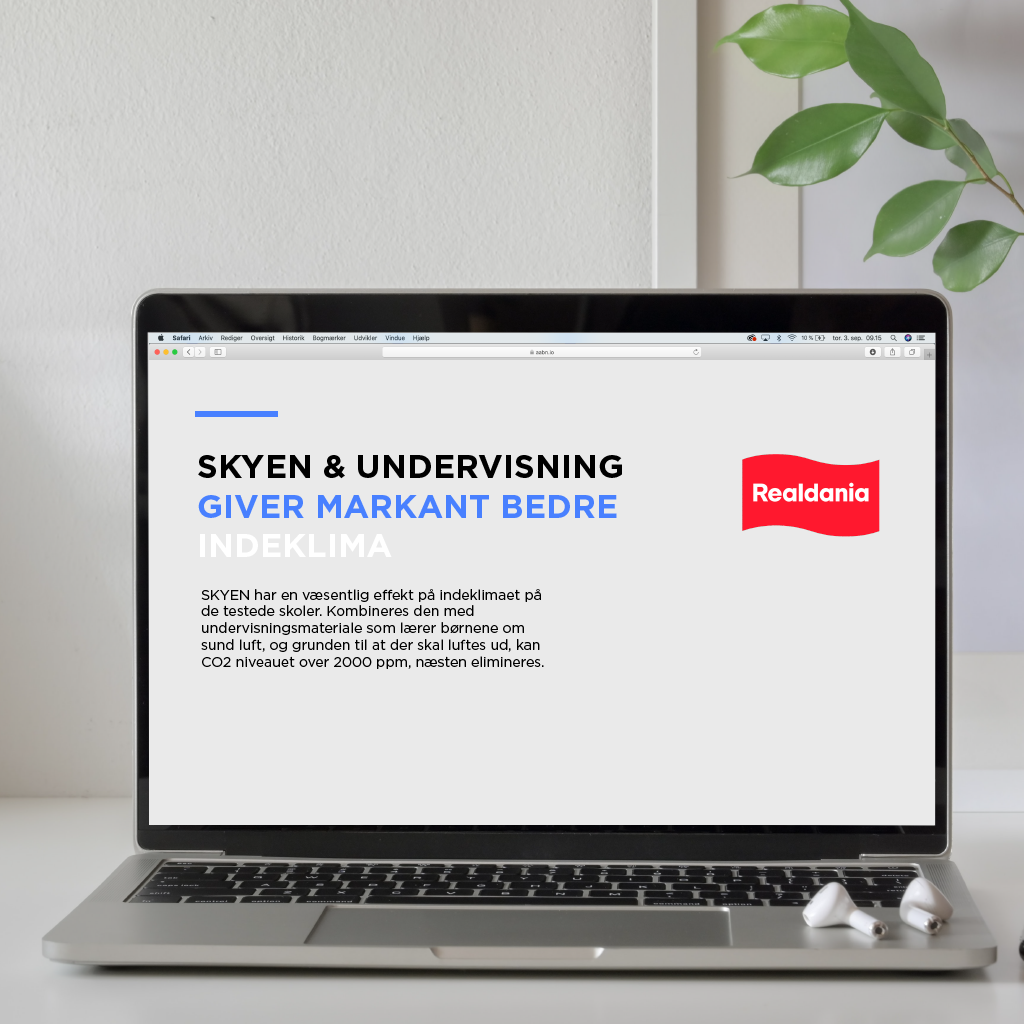
Download the report here
The CLOUD, the habit kit and the teaching material can initiate behavioral changes that create lasting improvements to the indoor climate. After 1 year, the students who have been set up with SKY and sent a habit kit in the class stay almost exclusively in acceptable CO2 levels during the school day.


